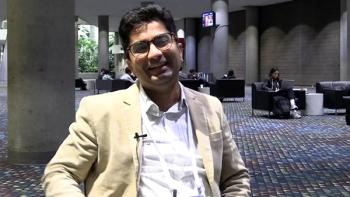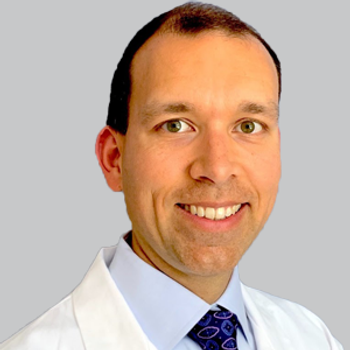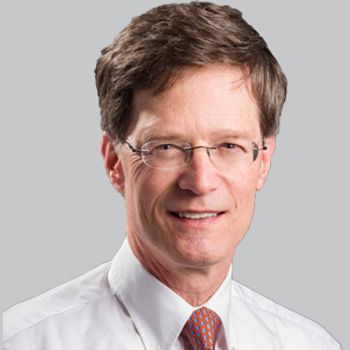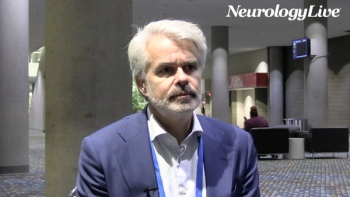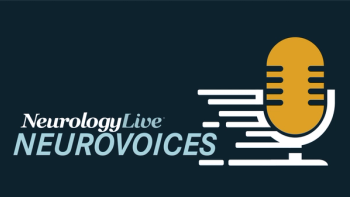
NeuroVoices: Mitch Elkind, MD, MS, FAHA, on Enhancing Brain Health Amid World Stroke Day
The chief science officer at the American Heart Association discusses its priorities for stroke prevention, cross-specialty collaboration, and equitable care as clinicians mark World Stroke Day 2025.
Stroke remains a leading cause of death and disability worldwide, with incidence rising among younger adults as lifestyle-related risk factors grow more prevalent. World Stroke Day, observed each year on October 29, serves as a reminder of the critical need for prevention, rapid recognition, and equitable access to care.
Before this year’s observance, NeurologyLive® spoke with Mitch S.V. Elkind, MD, MS, FAHA, chief science officer for brain health and stroke at the American Heart Association (AHA), about the most urgent challenges in stroke prevention and long-term recovery. In this Q&A, Elkind highlighted the importance of cardiometabolic risk reduction, cross-specialty collaboration between neurologists and cardiologists, and improving public awareness through community-focused education and quality initiatives like the AHA’s Get With The Guidelines–Stroke program.
NeurologyLive: For this year’s stroke awareness day, what do you see as the most urgent priorities in improving stroke prevention today, especially given the rising rates among younger adults?
Mitch S. V. Elkind, MD, MS, FAHA: The rising rates of cardiometabolic diseases, like obesity and diabetes, and related conditions, like hypertension, are of greatest concern. About 40% of US adults are obese, and the American Heart Association projects that this will increase to about 60% by 2050 if current trends continue. Obesity brings on diabetes and high blood pressure, which are major risk factors for stroke. We can address this by encouraging people to learn and follow the American Heart Association’s simple checklist for healthy living,
Life’s Essential 8 covers 4 health factors and 4 health behaviors. The 4 factors—about which the American Heart Association recommends you “know your numbers”—are blood pressure, cholesterol, blood sugar, and weight or body mass index. The 4 health behaviors are eating a healthy, Mediterranean-style diet; getting sufficient exercise (at least 150 minutes weekly of moderate to vigorous activity); getting enough sleep (7 hours nightly); and avoiding tobacco. Maintaining healthy numbers for Life’s Essential 8 is associated with reduced risk of stroke and dementia.
How do cardiology and neurology intersect most effectively in stroke care, and where are we still falling short?
There are several places of intersection between cardiology and neurology when it comes to stroke care. First, cardiologists can be very helpful in managing patients’
Cardiologists and neurologists can work together even better by ensuring that their hospitals establish more formal ways for these specialists to collaborate, perhaps through the use of joint training sessions and case conferences. This would ensure that all members of the care team are aware of the latest developments and deliver a consistent message to patients, who may be unfamiliar with medical terminology and in a state of anxiety after their stroke. They can also work together to ensure that shared decision-making is used to enable patients to make better and more informed decisions about their care.
What lessons from cardiovascular medicine can neurologists apply to improve long-term stroke outcomes?
An important part of cardiac care after heart attack or surgery is cardiac rehabilitation. Cardiac rehab involves helping patients increase activity levels and ensuring their risk factors are well controlled. It also includes maximizing cardiovascular fitness. It is a standard part of care covered by insurance for many months after care.
Stroke rehabilitation tends to focus on learning how to compensate for any deficits caused by the stroke, and helping one to reintegrate into home life as well as possible. This is essential. But stroke rehabilitation does not yet include the focus on cardiovascular fitness as a major factor in the way that cardiac rehab does, although research is ongoing in this area to demonstrate its value. This may result from the fact that many stroke patients are unable to use exercise equipment due to weakness, incoordination, sensory loss, and other deficits; the equipment can be modified, however, in ways that enable working on fitness as well as function. Enhanced cardiovascular fitness is important to prevent future strokes, other cardiovascular events, and cognitive decline.
World Stroke Day emphasizes equity. How can we close gaps in stroke recognition and treatment across diverse communities?
We can close gaps in recognition of care by providing education to all communities about stroke symptoms and warning signs. The
Quality improvement programs like the
Looking ahead, what message would you like to emphasize to clinicians and policy makers on this World Stroke Day about the future of stroke care?
We have made tremendous advances in the treatment of acute stroke over the past decade, using clot-busting drugs, clot extraction devices, and advanced imaging. But treatment is still highly dependent on rapid recognition of stroke symptoms and bringing patients to the hospital immediately. We need to make sure that everyone, everywhere knows the signs and symptoms of stroke and the correct response; time is brain, and we should be sure that stroke care gets the same rapid attention as a heart attack.
Stroke can also happen to anyone at any age. We are seeing younger and younger people experience stroke. We need to do a better job of preventing stroke by reducing the burden of high blood pressure, obesity, and diabetes in society because the best treatment of stroke is not to have one in the first place.
Newsletter
Keep your finger on the pulse of neurology—subscribe to NeurologyLive for expert interviews, new data, and breakthrough treatment updates.

